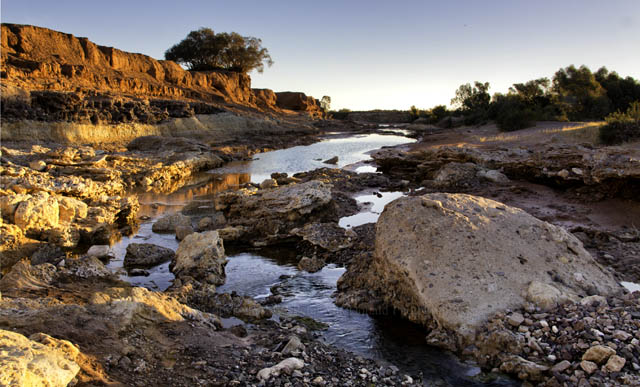I have a student new to photography whose pictures don’t have much life. The subjects are interesting but the pictures aren’t conveying that. The answer won’t lie in Photoshop or Lightroom but in what happens in the field.
How many times have you seen a fantastic panorama that’s just going to be the perfect picture, but after the shot is processed or printed, its flat and lifeless.
When taking a photo, the first thing to look for is the light, secondly colour and then the subject. Getting the light to fall from the right direction will make all the difference, if colour is the main feature then it has to be brought out.
The shot above is no world beater but its got interest. It a creek that’s flowing out of the Flinders Ranges and it’s about halfway to Lake Torrens.
In previous floods the waters have cut a bank about 4 to 5 metres high. The late afternoon sun really brings out the colours in the bank.
The big advantage here is that the sunlight is going across the picture from right to left, providing contrast and therefore a sense of depth.The water is a line leading the eye through the picture and another essential is a strong foreground.
Similar treatment for this section of the creek a few hundred metres further downstream and taken 30 minutes earlier.
I visited both these spots twice just before sunset. The first time I didn’t get all the elements to gel. This was on the second day.
Both were shot at f22 for maximum depth of field and a graduated neutral density filter was used to reduce the contrast from the sky so that the details of the bank and the creek were maximised.
Levels were the only adjustment made in Photoshop.
Shooting between sunrise and 10 or from 3pm to a little after sunset are the times when most of the elements will be in favour of the photographer.



Love the tips. Morning and evening light just do something magical.